EX app
Securing a hazard-free work environment. The EX inspection app s designed to facilitate and manage inspections and maintenance of equipment in explosive atmospheres. Commonly used in industries such as oil and gas, chemical plants, and manufacturing, this app helps ensure compliance with safety regulations and standards.
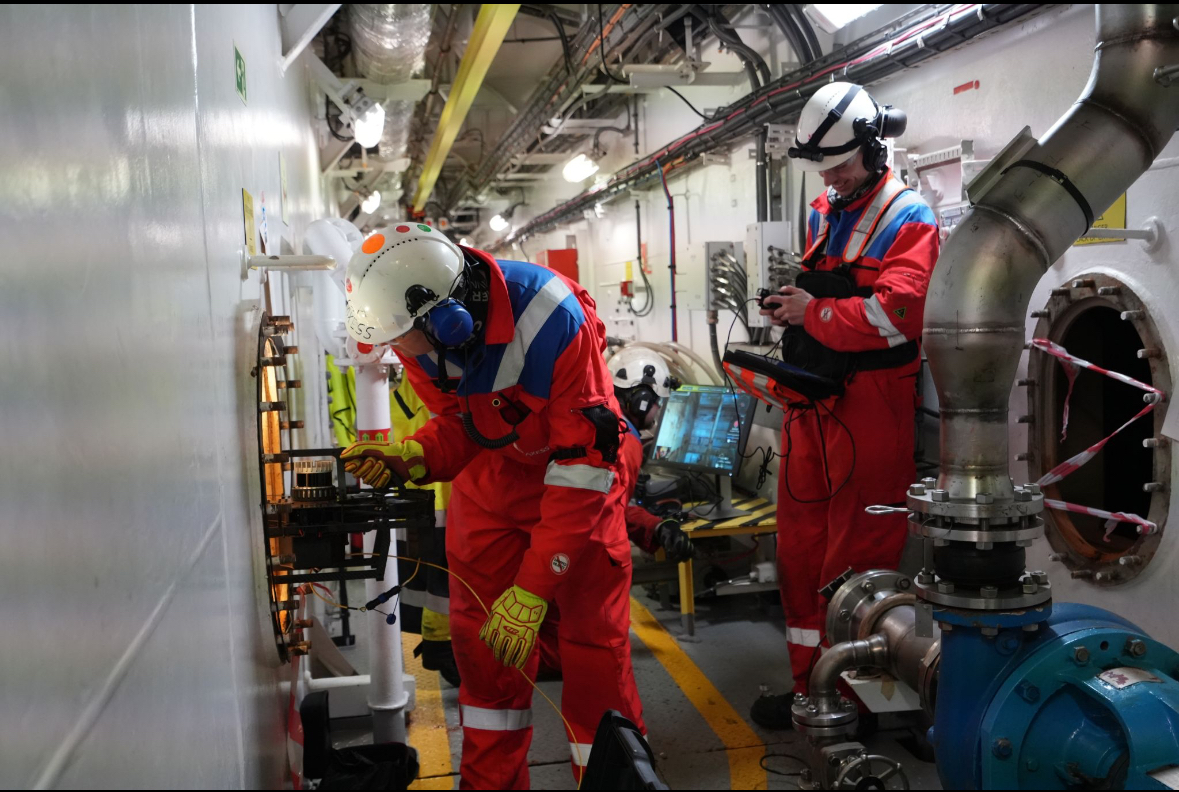
Background
The main problem with the app was the potential for human error and inefficiencies related to manual data entry during equipment inspections in explosive atmospheres. Inspectors often had to manually record information about each piece of equipment, which not only consumed valuable time but also increased the likelihood of mistakes, such as mislabeling or overlooking critical details.
Additionally, the existing inspection processes could be cumbersome, making it challenging for inspectors to quickly access accurate equipment information when needed. This lack of efficiency hindered timely decision-making and compliance with safety standards, which are crucial in high-risk environments.
I focused on creating an RFID scanning feature to allow inspectors to quickly and accurately track equipment in explosive atmospheres. By incorporating RFID technology, we enabled real-time data collection, significantly reducing the risk of human error and ensuring more efficient safety checks.
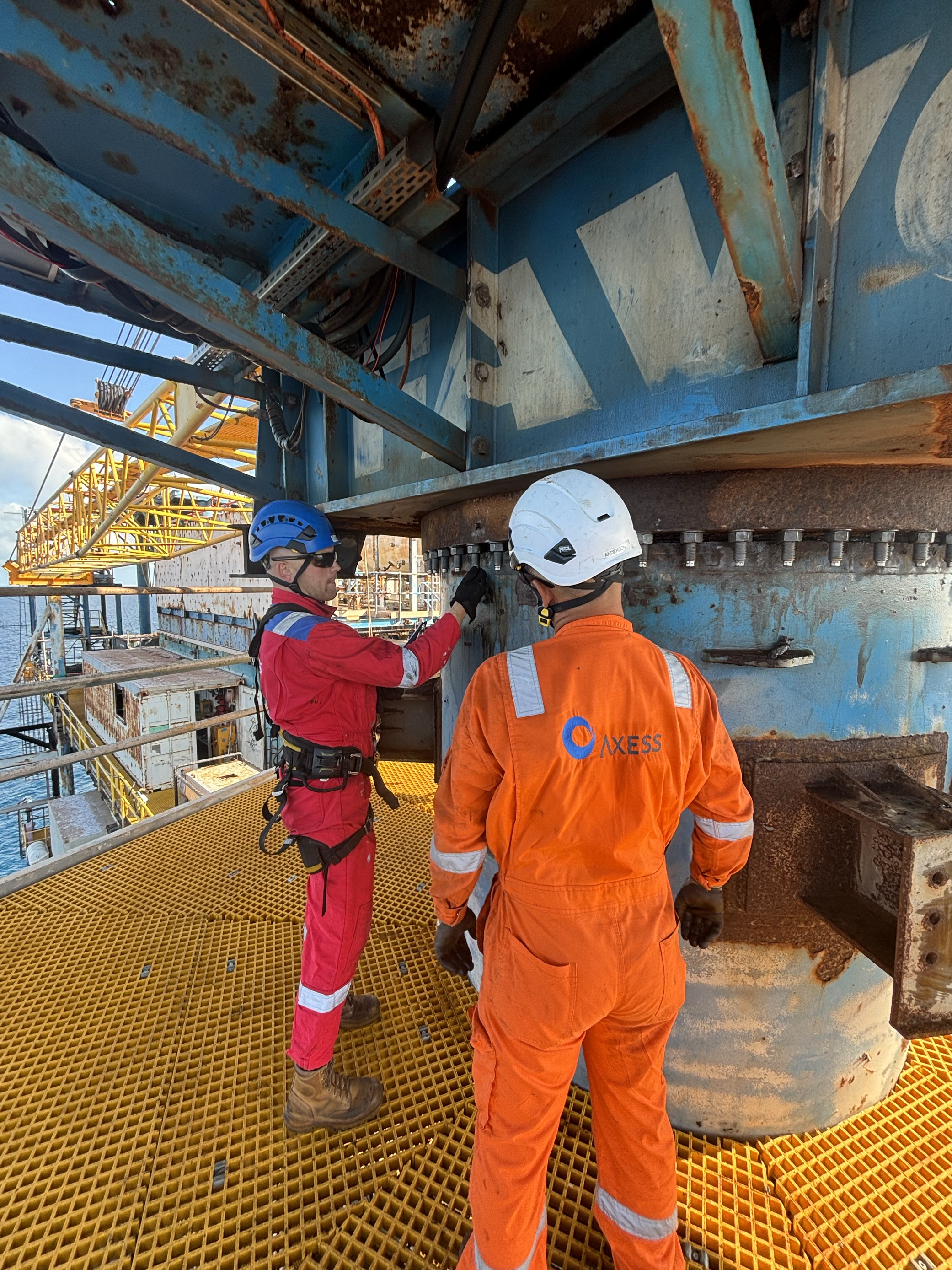
User personas
Through extensive research, we identified three key user personas that the EX Inspection App targets. After analyzing their specific needs and challenges, we chose to focus on the Operations manager persona. By prioritizing this persona, we can effectively reach them through industry training programs, safety compliance workshops, and partnerships with organizations specializing in oil and gas safety, ultimately enhancing their inspection workflows and safety outcomes.
Defining the MVP
After engaging with our user personas and identifying their specific challenges, our primary focus is to improve the efficiency of inspections through features like RFID scanning, which will minimize human error and reduce manual data entry. By incorporating user feedback, we will design seamless workflows that allow inspectors to easily filter item lists, scan equipment, and generate comprehensive reports with minimal hassle. By focusing on the goals, our product vision is to not only meet the current needs of our users but also to position the EX application as a leading solution in the industry, promoting a culture of safety and efficiency in hazardous area management.
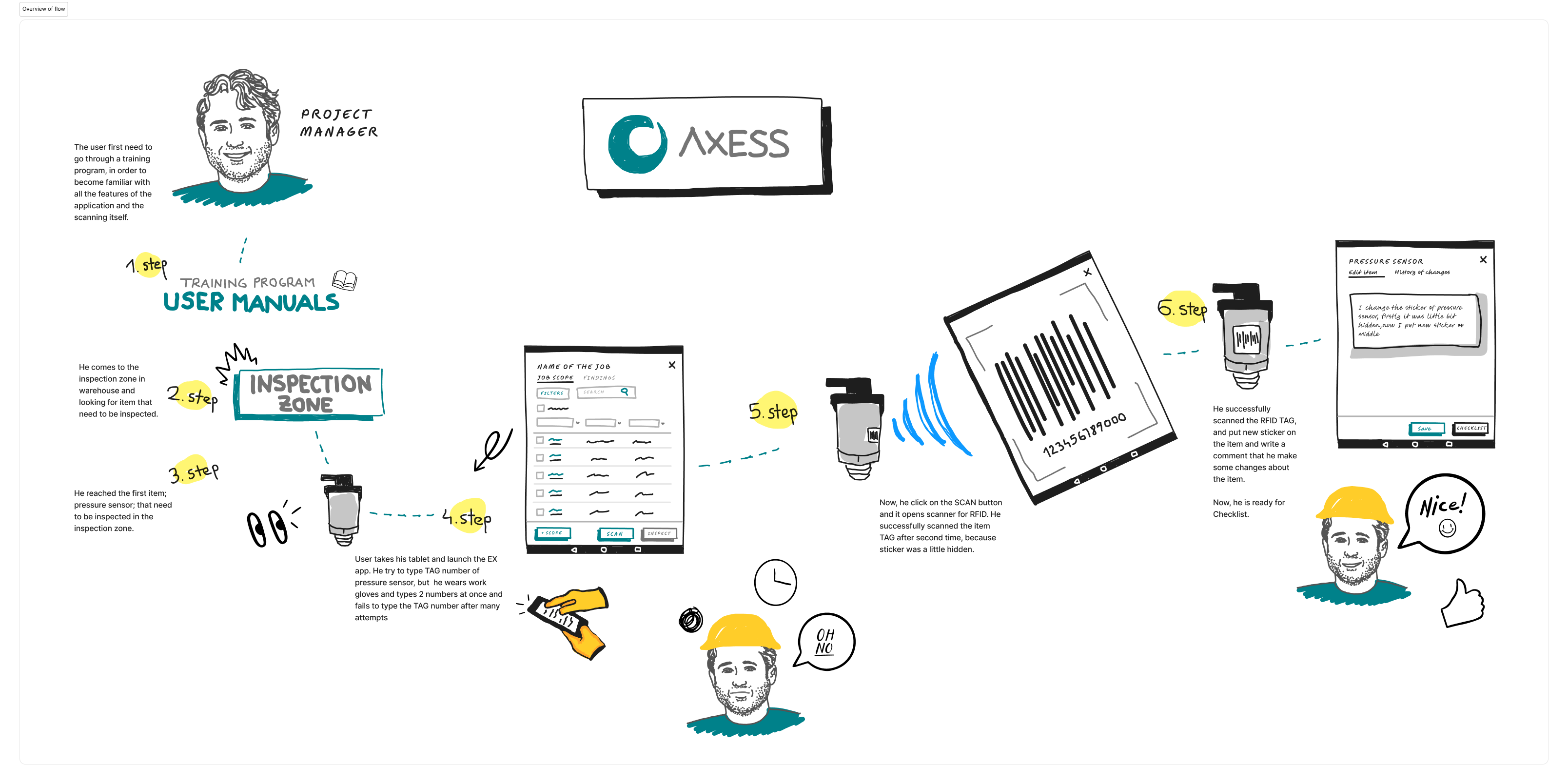

Final solution
The user stands in the inspection zone, tablet in hand, prepared to conduct an inspection. First, they open the scanning application on their device and enter the job that needs inspecting. The tablet is connected to the RFID reader, enabling the scanning of multiple items simultaneously. The user clicks the “Scan” button and selects the “Scan with RFID” option to begin the process.
Additionally, the application offers options for NFC scanning and QR/barcode scanning, which are particularly useful when the user is unable to scan multiple objects at once but needs to scan items individually. This flexibility allows inspectors to efficiently identify and track items one by one, ensuring accurate data capture even in situations where RFID scanning may not be feasible. Whether using NFC or a QR/barcode scanner, the user can seamlessly integrate these methods into their workflow, enhancing the overall inspection process.
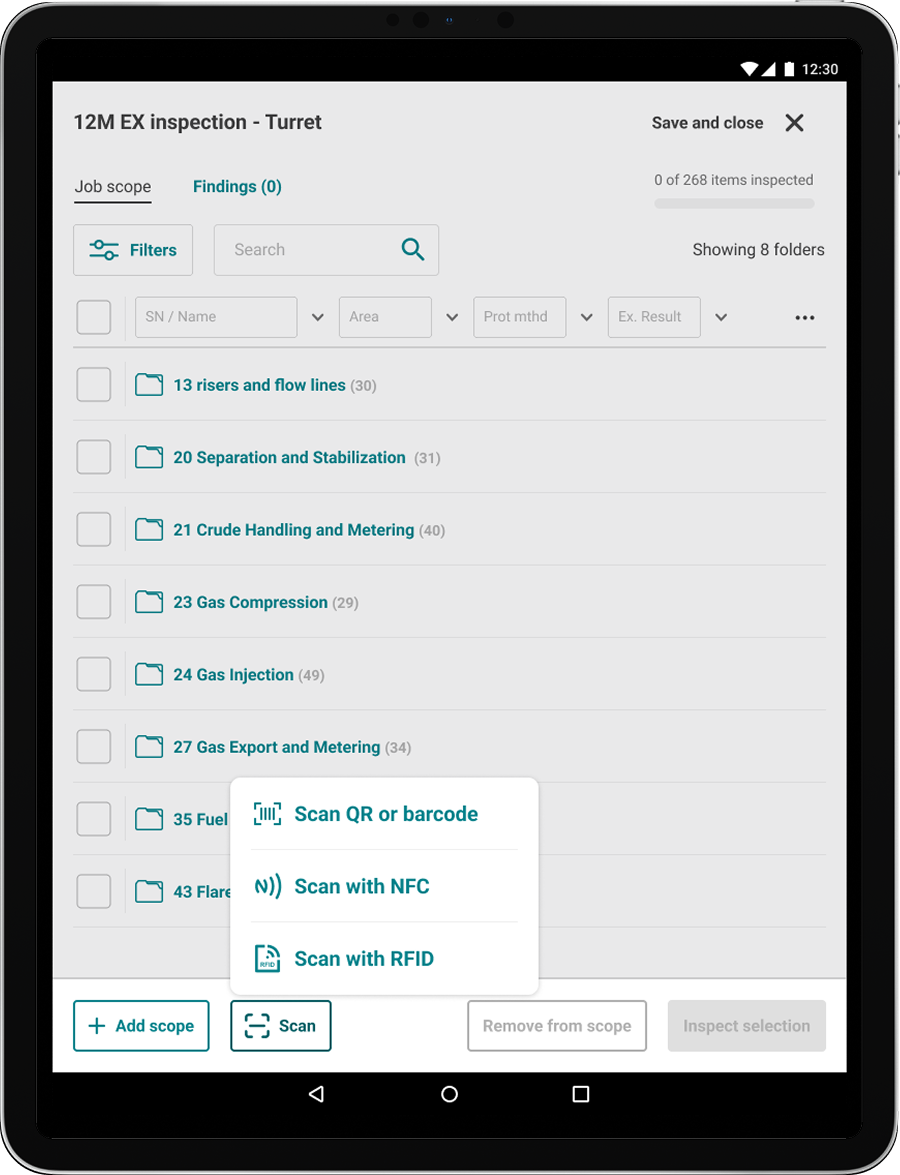
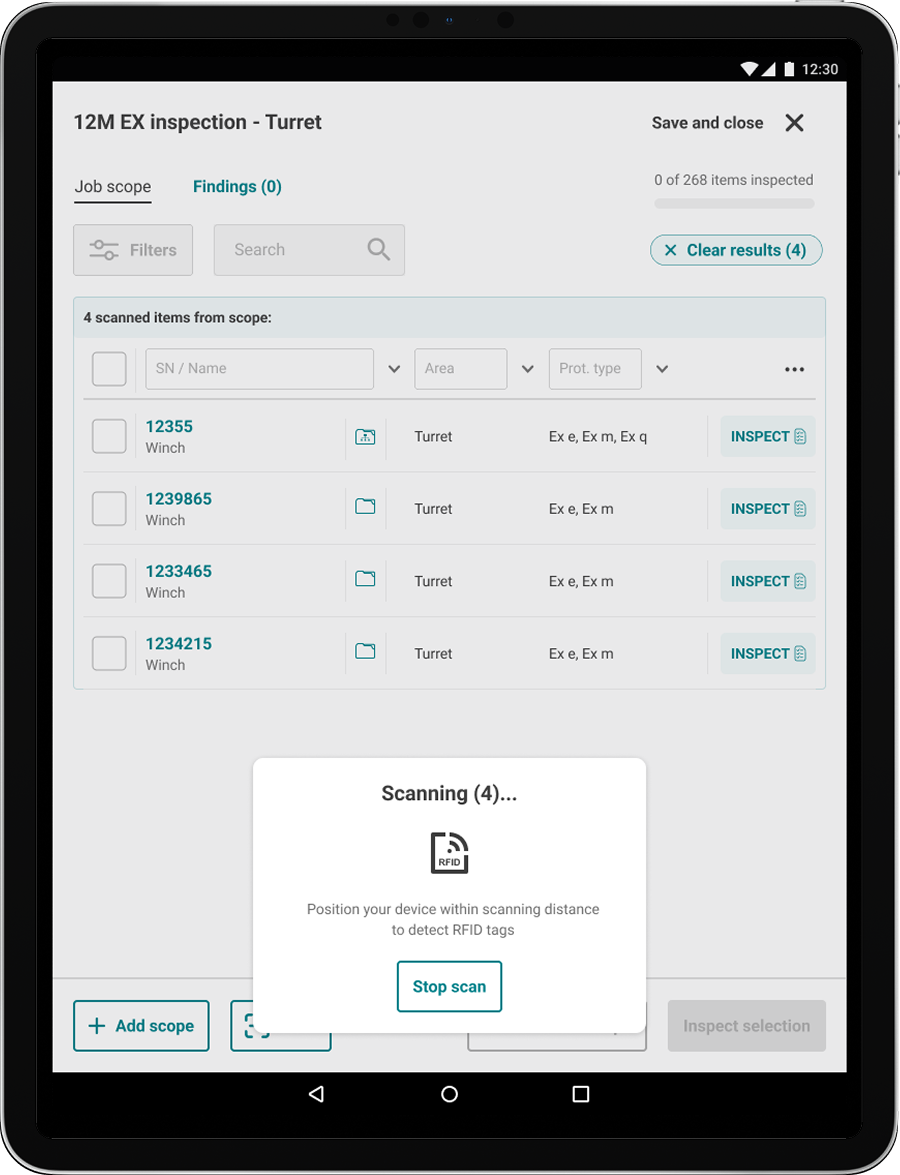
The active scanning screen displays a progress indicator as the user navigates through the inspection zone, moving close to items with RFID tags. The RFID reader emits signals that trigger the tags on nearby items to respond with their identification information. As the user scans, detected items begin to appear on the screen.
The list of scanned items updates in real-time. The user starts by scanning two winches that are closest to them. Continuing through the warehouse, the RFID scanner detects two additional winches, which are then added to the list of scanned items.
When the user is satisfied with the scanning results, press the "Stop Scan" button. A popup message then appears, displaying the total number of scanned items.
The filter and top search bar are disabled because they cannot be used when there are scanned items. If the user wants to search within the list of scanned items—especially if the list is extensive—they will use the column search feature.
For example, when using the column search for scanned items, the user can type "123" into the search bar and receive filtered results. If the user clicks the "x" in the search bar, it removes the search criteria and returns them to the full list of scanned items.
Once the relevant items are displayed, the user has options for further actions. If, in this scenario, the user clicks on "Clear Results" (6), the application takes them back to the home page of the job scope inspection, allowing them to continue their work seamlessly.
Through iterative testing and feedback, we refined the application to create an intuitive and efficient user experience. The implementation itself included the inspection and labeling of more than 4,500 pieces of equipment with all relevant information meticulously recorded in accordance with International Electrotechnical Commission (IEC) standards. This data was then transferred to a centralized server for simplified availability and management.

We endeavour to assist our clients in improving safety during hazardous electrical installations through:

Visual inspection
To identify defects that are apparent to the eye without needing access to the equipment.

Close inspection
To identify defects that can only be determined when the equipment can be accessed.
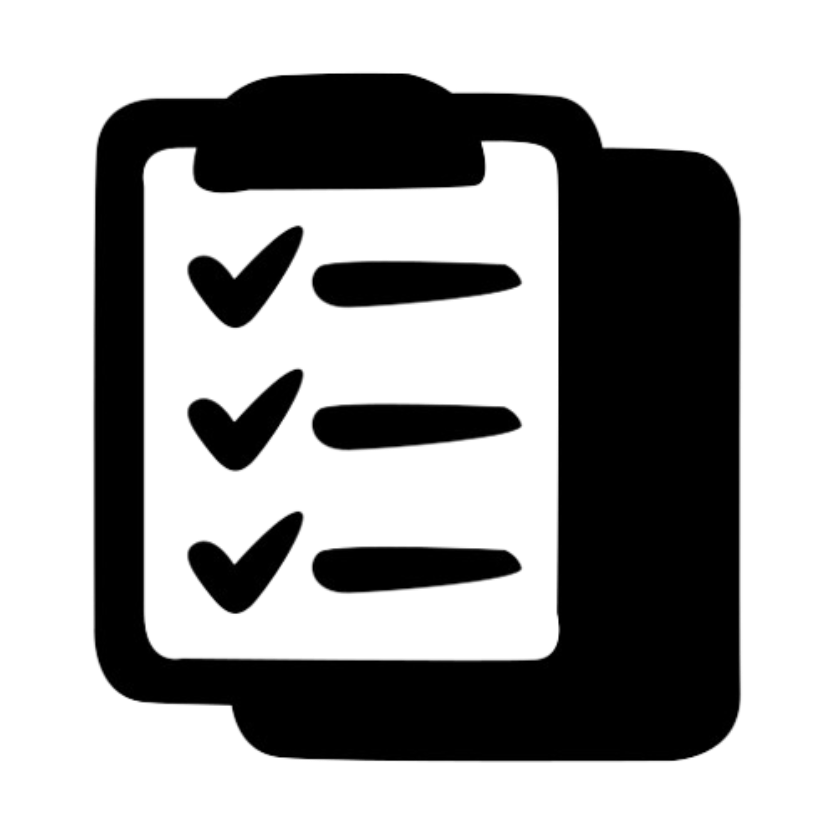
Detailed inspection
To identify defects that can only be detected when the enclosure is opened.
Outcomes and lessons learned
I learned just how much technology can make a difference in managing equipment and streamlining inspections. By improving visibility into equipment status, clients can better control their assets and plan maintenance or replacements more effectively, which really helps cut down on downtime.
I also saw how important it is to boost inspection efficiency. When inspectors can quickly identify and track equipment, it can lead to lower costs in the long run. Plus, having a standardized approach to equipment identification and data collection improves consistency in inspections. Overall, this experience highlighted the real benefits of using technology to enhance operations and ensure safety in hazardous environments.
See other projects

